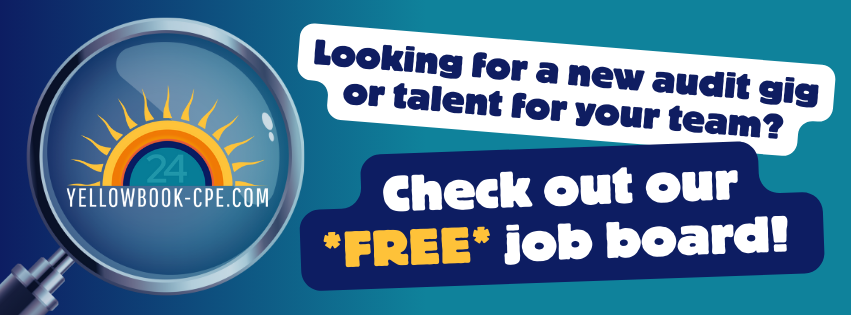How long does your audit team spend in the audit report writing process? And how painful is it?
Have you ever seen a doctor eating a bacon cheeseburger, drinking a scotch, and smoking a cigarette? Disturbing, isn’t it?
Have you ever seen an audit shop with crazy, mixed-up, inefficient processes that don’t make any sense? Even more disturbing!
Physician (or auditor!), heal thyself!
Audit report writing shouldn’t be so painful
No one knows better than an auditor that most crazy processes grow crazier over time. For instance, someone adds a step here and then a step there. Before you know it, you have a dozen silly steps taking three months to do.

In order to reduce the pain of the reporting process, you need to spend a little time now thinking about what you do and why. Hopefully that leads to ideas for streamlining your reporting process.
I recommend you sit down with key members of your team and administrative staff to put each step of the reporting process on its own sticky note. Then stick all of the steps of the process on the wall, in order. From there, ask the team to brainstorm ideas for streamlining the process.
Consider these 9 steps as part of your redesign
The nine-step process will help you cover all the important phases of report writing. The nine-step writing process has four phases:
- Planning

- Drafting
- Editing
- Formatting
In the planning phase, you decide what you will to say. For the drafting phase, you create full sentences to fill in your plan. In the editing phase, you hone your document to perfect it. And in the formatting phase, you make your document visually appealing.
In our nine-step process, the first three steps are the planning phase. Steps 4 and 5 make up the drafting phase. Steps 6 through 8 are the editing phase, and step 9 is the formatting phase.
PLANNING
Step 1. Outline an initial objective, scope, and methodology section
Step 2. Outline the detail section
- Get your thoughts on paper
- Write one sentence for each of the five elements of a finding
- Evaluate and reorganize
- Evaluate evidence gathered
Step 3. Outline an initial executive summary
DRAFTING
Step 4. Draft the objective, scope, methodology, detail section, and executive summary
Step 5. Draft the remaining pieces of the report
EDITING
Step 6. Edit the entire report for organization
Step 7. Edit the entire report for readability
Step 8. Edit the entire report for mechanical correctness
FORMATTING
Step 9. Enhance the format of the report
Ideally, you spend about 45% of your total writing time in planning, 15% in drafting, 35% in editing, and 5% in formatting.
Tips for using the 9-step process
Make It Easy on Yourself: Do Each Step Individually
Treating each of these steps as separate and distinct helps you write faster and create more logical documents. It’s also a lot more fun!
If you combine any of the phases, chaos and frustration result.
For instance, if you plan what you will write as you draft it, you end up rambling on. You start one place and end up another. This makes editing excruciating!
If you edit while you draft, you may never finish. You may write the same sentence four times. And usually, after that much rewriting, you need a coffee break… and then you start again, and break again, and start again. At that rate, you could spend hours on just one paragraph. EW!
Because each phase itself is manageable and contains a little bit of fun, do each task individually without a care for the next step. It sounds like it will take longer, but try it a few times. I think you will like it!
Delay Creating Full Sentences for as Long as Possible
This is one of the biggest time-saving tips of all time! Don’t rush to make your writing concrete.
Once you write a sentence, you become married to it. In other words, you have made your thoughts more solid and eliminated all other options in your mind and on paper. Once thoughts become concrete sentences, you may not be able to see their flaws (sort of like what happens when you choose someone to go steady with! 😎).
Because you have spent your precious time and effort choosing each word and arranging the words intelligently, woe be it to the jerk that puts a red pen to your masterpiece!
What I often found in my role as editor at an audit office is that whole paragraphs of carefully crafted sentences would get eliminated after I had come to a big-picture understanding of the piece. Talk about PAIN.
Eventually, I figured out if I asked the team to submit an outline of their report or finding to me before they wrote full sentences, we minimized the pain considerably. No one cares much if you move a single phrase in an outline around or eliminate it and replace it with something else. There isn’t that much attachment to the sketchy, unfinished sentences in the outline.
In our step-by-step process, I recommend that you show a reviewer an outline (STEP 2) before you draft (STEP 3). By planning first and drafting and editing later, you allow yourself and your reviewer more flexibility.
Get Buy-in Along the Way
Turn in deliverables to your reviewer or supervisor as you go. This way, you reduce the possibility the supervisor will be surprised or displeased with the final product.
At a minimum, you should present the following items for approval before you proceed to the next step:
- Objective, scope, and methodology
- Finding outlines
- Outline or draft of the executive summary
- Outline or draft of the standard letters
- Outline or draft of each detailed issue
Share with People Who’s Feedback You Value
You shouldn’t go this alone. As scary as it is to share your ideas and your writing with others, sharing always helps to clarify your thoughts and improve your message.
Before you draft, find someone whose opinion you respect, and let that person read your outline. Ask them:
- Do you like my approach to this finding?
- Do you think the recommendation is sound? Is this something the client will implement?
- Should I be happy if the client implements this recommendation? If the client does what I am asking, would I be able to leave them alone about this issue on the next audit?
- Can you think of another effect for this issue? An effect that may have more impact on the reader?
- What changes do you suggest?
- Do you think I am ready to proceed to creating full sentences for this issue?
If their answers are unexpected, ask someone else to read your work. If both of your readers have similar, unexpected things to say, consider revising the outline to make your message clearer.
Looking for high-quality and convenient CPE?
We have you covered! Our live webinars are a great choice if you want the learning to come to you. Just log on at the scheduled time and enjoy wherever you are! Here are a few of our upcoming courses:
- May 21: Fraud Forum for Government Auditors (6 CPE hours)
- June 2-6: Virtual Audit Bootcamp (20 live + 7 bonus self-study for a total of 27 CPE hours)
- June 10: Introduction to Forensic Accounting (2 CPE hours)
- June 17: Fraud in Plain Sight: Why Auditors Lose the Fight (4 CPE hours)
- June 18: Data to the Rescue: Using Visuals for Better Audit Reports (2 CPE hours)
Need to do things at your own speed, but still get all your credits? Plan your CPE around your life, not the other way around! Yellowbook-CPE.com has dozens of self-study courses, including the Agile Bundle. Government auditors must audit the right risks at the right time to serve the public. Agile is a powerful way to get there! Everything about your audit becomes flexible and responsive when using agile auditing principles, including audit report writing.




 Yellowbook-CPE.com is registered with the National Association of State Boards of Accountancy (NASBA) as a sponsor of continuing professional education on the National Registry of CPE Sponsors. State boards of accountancy have final authority on the acceptance of individual courses for CPE credit. Complaints regarding registered sponsors may be submitted to the National Registry of CPE Sponsors through its website:
Yellowbook-CPE.com is registered with the National Association of State Boards of Accountancy (NASBA) as a sponsor of continuing professional education on the National Registry of CPE Sponsors. State boards of accountancy have final authority on the acceptance of individual courses for CPE credit. Complaints regarding registered sponsors may be submitted to the National Registry of CPE Sponsors through its website: